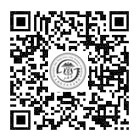April 11, 2025, is the 29th World Parkinson's Day. On this day, the first Chinese patient receiving a GCP-grade autologous stem cell transplant for Parkinson's disease showed up at the popular science publicity activity held by Ruijin Hospital, Shanghai Jiao Tong University School of Medicine. It is thefirst time that the patient has shared her personal experience of preliminary rehabilitation from Parkinson’s disease with the public. This marks a milestone in the clinical application of the innovative cell therapy to Parkinson's disease, which involves using autologous stem cells to repair damaged brain cells. It is also an important breakthrough in the cell therapy for Parkinson's disease.
As a common neurodegenerative disease, Parkinson's disease affects about 4 million patients in China. Parkinson's disease is associated with the gradual death of dopaminergic neurons in the brain, resulting in limb tremor and bradykinesia.Patients may finally lose motor functionaltogetherand become stiff in the whole body, which meansthe patients will be entirely incapable of taking care of themselves.Unfortunately,medication therapy can only slow but never stop the progression of symptoms.
Recently, Ms. Shen, a Parkinson’s disease patient aged 66, has received a new therapy at Ruijin Hospital: The dopaminergic neural precursor cells differentiated from autologous induced pluripotent stem cells are transplanted into the brain. Over a month after the surgery on March 1st, Ms. Chen has gained the ability to walk independently all day.
This represents the first attempt to apply cell therapy to treat Parkinson's disease in China. Ms. Shen is China’s first Parkinson’s disease patient to receive the autologous cell therapy in a clinical trial approved by the National Medical Products Administration.
During 14 years as a Parkinson's disease patient, Shen shifted from single-drug therapy to multidrug therapy and finally progressed into severe complications. Much to her surprise, Shen found herself capable of moving in bed upon waking up from anesthesia and ambulating out of bed the next day. Shen says that “after receiving the stem cell therapy, my sleep has been greatly improved. I fall asleep quickly and sleep for 6 hours without waking up. My hands and feet, which used to be very stiff, have now become much more flexible. I can feel the improvements every day. Although full recovery takes time, making progress every day has filled my heart with hope.”

Ning Guang, Academician of the Chinese Academy of Engineering and President of Ruijin Hospital,saysthat Ruijin Hospital has been dedicated to the research and treatment of Parkinson’s disease in recent years and has been making advances in some new technologies, including stem cell transplantation and neuromodulation. He also emphasizes that Ruijin-Hainan Hospital will soon introduce industry-leading drugs and equipment under the favorable policy of “first trial and first pilot”. For example, gene therapy and the brain-computer interface technology which target mid- and advanced-stage patients offer more diversified options.President Ning thanks the patient for her trust and support for the hospital and makes it very clear that Ruijin Hospital will join hands with Parkinson’s disease patients and keep fighting the disease.
The first success paves the way for further research.

The team led by Liu Jun, Director of the Department of Neurology, Ruijin Hospital, has worked closely with the team of research fellows led by Chen Yuejun at the Center for Excellence in Brain Science and Intelligence Technology, Chinese Academy of Sciences, and developed the UX-DA001 Injection after three years of concerted efforts. This therapy collects blood cells from patients, which are induced into dopaminergic precursors with differentiation potentials and then transplanted to target regions in the brain. Through relentless technological innovations, Chen’s team has reached an international advanced level in terms of thepurification of the differentiated cells. The purification technology for differentiated cells was approved for clinical trials by the National Medical Products Administration in December 2024, and the relevant research projecthas alreadystarted in 2025.
According to Li Dianyou, the chief physician performing the surgery on Shen, the transplanted cells will mature in the next 3-6 months, get connected with the existing neural network, and release dopamine. Compared with conventional medication, this cell therapy is expected to achieve a functional cure.
Director Liu says that Parkinson’s disease is generally controlled by medication therapy, though the efficacy diminishes in 5 years, making the disease progression almost unstoppable later on. For some patients, deep brain stimulation (DBS), which involves implanting electrodes to control brain activity, improves dyskinesia to some extent but requires long-term parameter control. The efficacy of this technique also tends to be attenuated over time.
The novel cell therapy for treating Parkinson’s disease replenishes the lost dopaminergic neurons and may become one of the most promising curative treatments ever. It is noteworthy that the novel therapy does not carry the risk of immune rejection, as it only uses autologous cells.Currently,the new cell therapy has been approved for clinical trials in both China and the US. The success of treatment in Ms. Shenis a crucial step towards more fruitfulresearch.
“The therapy may bring new hope for mid- and advanced-stage patients”. Director Liu says that the team keeps a continuous watch on the integration of the transplanted cells andwillgradually increase the number of patients receiving the new therapy, which is believed tobenefit millions of patients.

